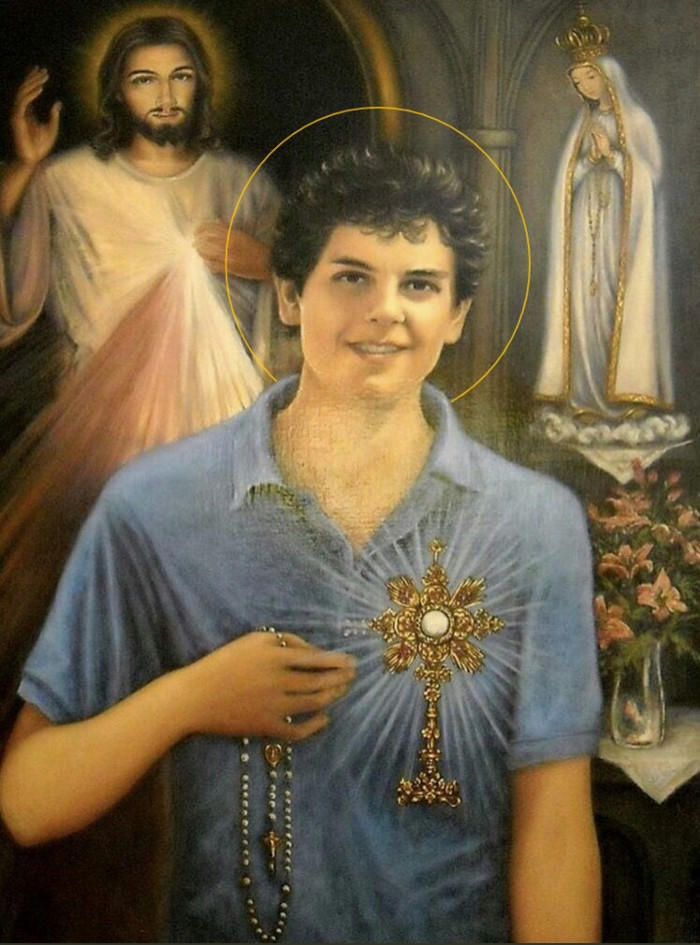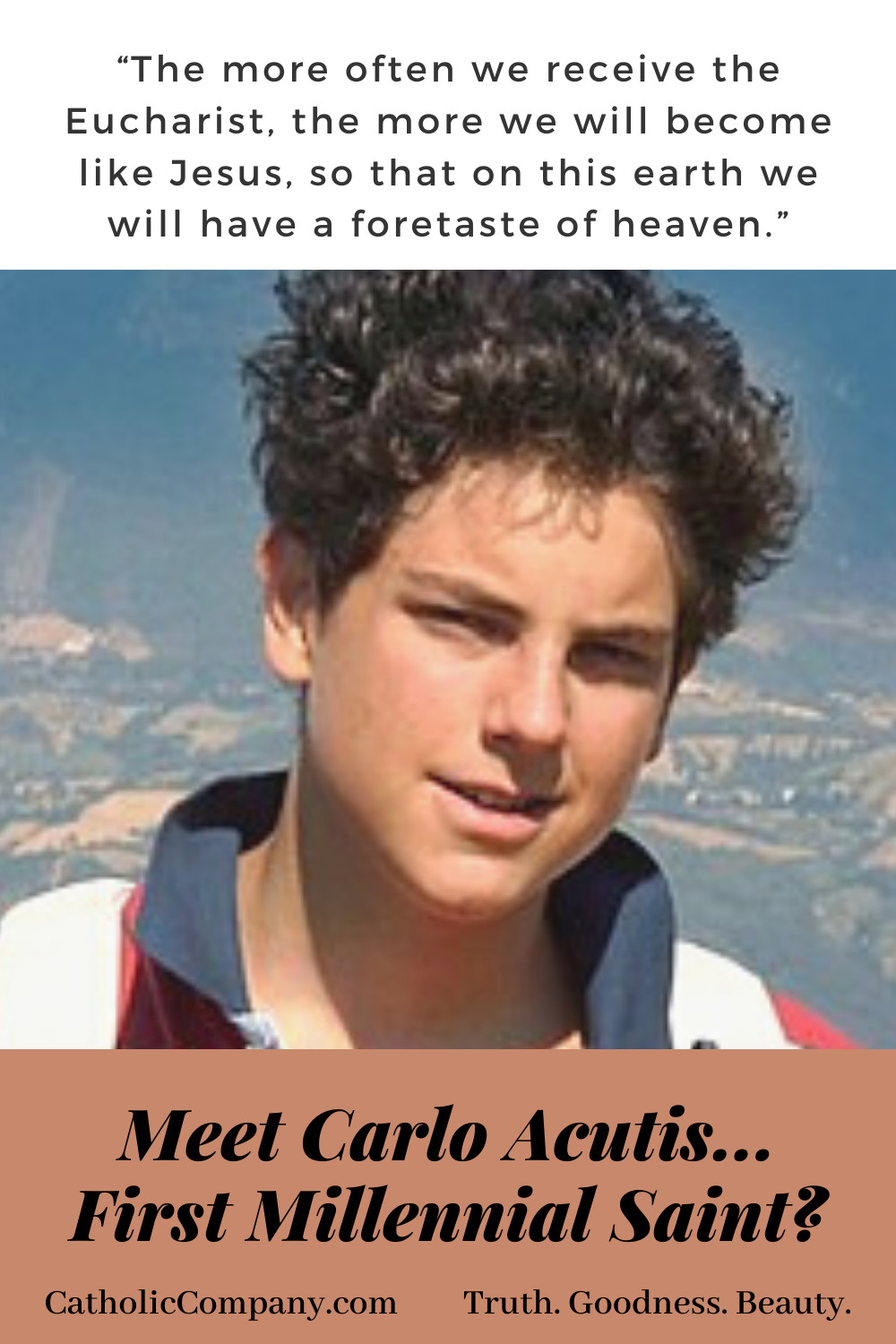The Millennial Saint: How Carlo Acutis's Tech-Savvy Faith Led to Canonization
Carlo Acutis, a teenager with a passion for computers and a deep devotion to the Catholic faith, is on the path to becoming a saint. His story is not just one of piety, but of a unique blend of modern technology and timeless faith that captivated the hearts of many and ultimately led to his canonization. His case highlights the evolving understanding of miracles in the 21st century and the complex process by which the Catholic Church determines sainthood.
A Virtual Museum of Miracles
From a young age, Acutis displayed an unwavering faith. As an eleven-year-old boy in Milan, he began collecting and documenting stories of miracles from around the world. He compiled these accounts, including tales of wine turning into blood and blessings stopping tsunamis, into a “virtual museum” on his website, showcasing his early commitment to his faith and demonstrating a surprisingly advanced understanding of technology for his age. This dedication continued into his teenage years, where he actively taught catechism classes, encouraging young children to embrace their faith and become saints themselves. His unwavering belief that he would die young and a desire to be buried in Assisi added another layer of intensity to his short life, while leaving a legacy which continues to this day.
Acutis's Path to Sainthood
The process of canonization within the Catholic Church is a rigorous one, stretching far beyond the individual's lifetime. It involves extensive investigation into the candidate's life, examining every aspect for signs of holiness. More controversially, it requires evidence of at least two scientifically inexplicable miracles attributed to the candidate after their death. This aspect of the process often generates lengthy delays, with many saintly causes lingering for decades due to the strict standards for miracles. The Vatican's meticulous approach to saint-making acts, in part, as a way to maintain authority over popular piety.
The Rigorous Process of Sainthood
Acutis’s own path to sainthood began soon after his death from leukemia at the age of 15 in 2006. Following his passing, his belongings were handed over to a historical committee that meticulously examined his life and works for any signs of sin. In 2012, the Archdiocese of Milan initiated the formal process, and in 2013, the Vatican granted permission to investigate his life further. This marked the start of his official journey toward sainthood. The Dicastery for the Causes of Saints, the Vatican office responsible for this process, operates with a level of secrecy and a lack of time limits that leaves many unsure of its methods. It takes on an average of 1600 Causes simultaneously, some dating back to the 15th century.
The Role of Miracles and the Dicastery
The Dicastery's role is multifaceted, balancing the theological with the pragmatic. The selection process is not solely about piety; it also involves considerations of identity, politics, economics, and geography. The Church's choice of candidates often reflects broader strategic goals, and in Acutis, the Vatican found a figure who resonated with younger generations—a 'millennial saint,' as he was quickly dubbed, who also possessed a sophisticated understanding of the internet and its reach. This connection allows for a modern approach to the dissemination of faith.
The Miracles of Carlo Acutis
The requirement for miracles in the canonization process has been a subject of debate and has evolved over time. While popular piety often plays a role, the Vatican's official procedures demand rigorous documentation. Acutis’s case underscores these complexities, with the verification of his miracles playing a pivotal role. The first miracle attributed to Acutis involved the healing of a Brazilian boy named Matheus, who suffered from a diseased pancreas. After praying to Acutis, Matheus experienced a complete and inexplicable recovery that baffled doctors and eventually cleared the way for Acutis's beatification in 2020.
A Second Miracle and Canonization
The second miracle, crucial for his canonization, involved the healing of Valeria, a young woman from Costa Rica who suffered severe head trauma after a bicycle accident. Her improbable recovery, with doctors citing no scientific explanation, further strengthened the case for Acutis's sainthood. After the Vatican's medical board confirmed the miracle in 2024, Pope Francis approved the canonization. This decision sparked a surge of interest and pilgrimage to Acutis's tomb in Assisi, underscoring the powerful impact of his story and the enduring appeal of his legacy.
The Enduring Legacy of a Millennial Saint
A testament to the lasting influence of Acutis is the continued pilgrimage to his tomb, where countless people visit daily, offering prayers and seeking blessings. Acutis’s story transcends geographical boundaries and generational divides. His journey toward sainthood, characterized by his youthful enthusiasm, technological savvy, and unwavering faith, offers a unique model for contemporary spirituality and inspires many who are drawn to his unique story.
The swiftness of Acutis's Cause, compared to others that have lingered for centuries, highlights the factors that play into the canonization process. From the involvement of dedicated supporters working to promote his story to the alignment of his profile with the Vatican's objectives, numerous elements converged to expedite his journey toward sainthood. His story serves as a remarkable example of how faith, technology, and the enduring appeal of miracles can intersect in the modern world. The canonization of Carlo Acutis is not merely a religious event, but a cultural phenomenon, reflecting the evolving relationship between faith and society in the 21st century. His canonization illustrates the ongoing tension between popular piety and the Church’s formal procedures, while also demonstrating the enduring human need for miracles and hope.
The significance of Acutis's canonization extends beyond his individual story, highlighting the evolving role of technology in faith, the enduring belief in miracles, and the continued adaptation of religious traditions to meet the needs of changing times. This is a story of faith that resonates across generations and cultures.


















